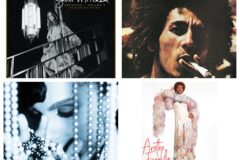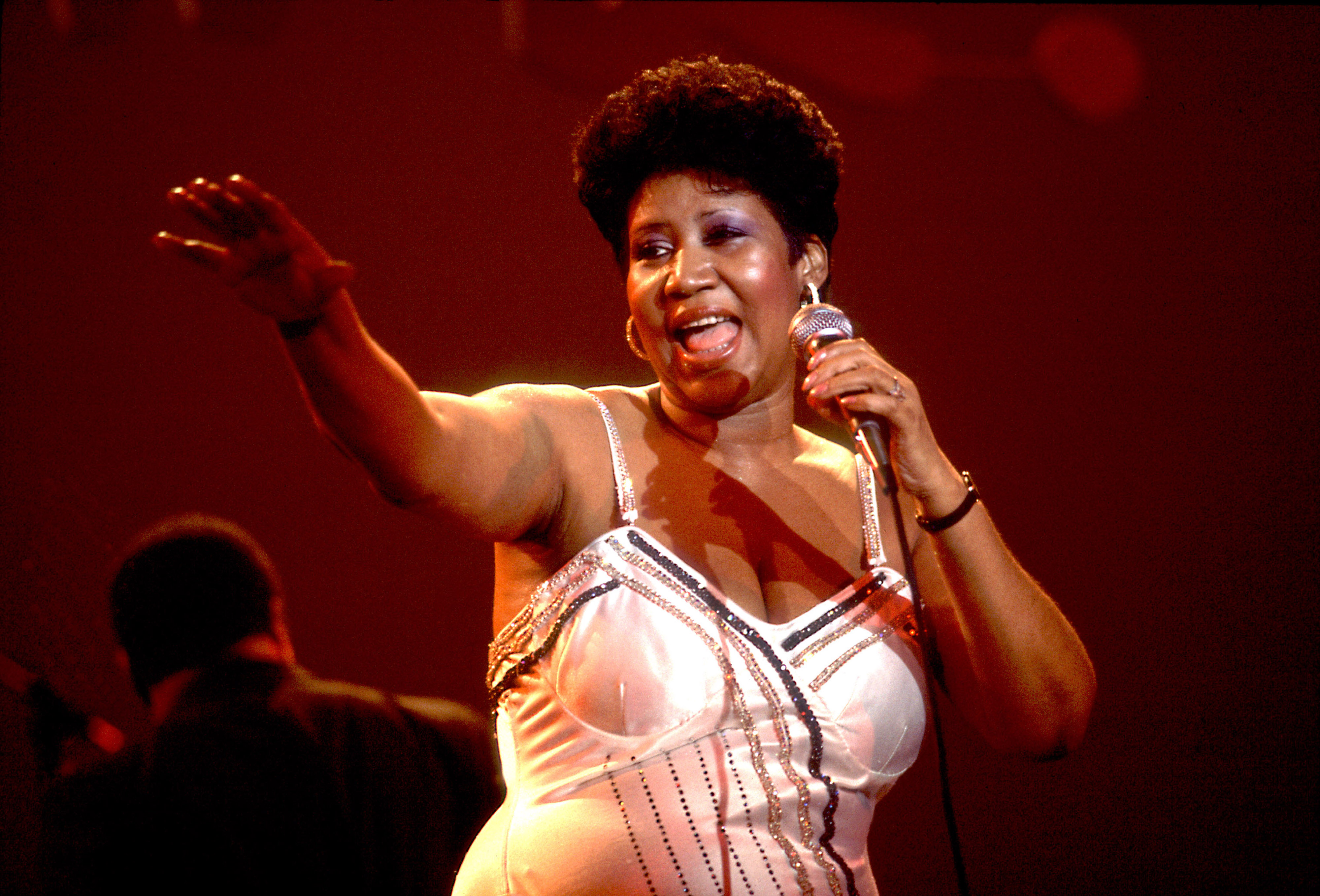In the beginning was the Voice, and the Voice was with God, and the Voice was God. My edition of the Book of John says this. At the start of her career, Aretha Franklin had a talent for singing and playing piano that was nurtured in New Bethel Church in Detroit, where she cut her teeth performing “Jesus, Be a Fence Around Me” under her father’s shrewd eye. The problem—what a problem!—of her early career at Columbia Records was what to do with this talent. Franklin’s voice, said mentor Jerry Wexler, “was not that of a child but rather of an ecstatic hierophant.” That’s an awful lot of press to live down.
It was less of a problem for secular supplicants, though. By the time Franklin recorded 1967’s I Have Never Loved a Man the Way I Love You for Wexler’s Atlantic Records along with the Muscle Shoals rhythm section, she was 11 albums into a career that required the luckiest of congruences. The apex of the civil rights movement’s grasp on white America’s sympathies and the suppleness of her singles turned the album into a massive hit; after a cover of Otis Redding’s “Respect” hit #1 in America, she didn’t stop, scoring six consecutive pop top tens for a total of 17 by 1987—an estimable run, indifferent to career valleys, susceptible to being taken for granted like the portraits of college presidents.
Years of failed comebacks preceded 1985’s Who’s Zoomin’ Who, a re-imagining of Aretha as Tina Turner or, damn, Steve Perry—an arena rock belter whose indiscriminate appetites should never be confused for taste, especially in marimbas or collaborators. This is an album on which Annie Lennox sings like Jonathan Cain plays guitar. It produced “Freeway of Love” and the title track. I can’t stand it, but the platinum sales financed the next fallow period.
Why or how Franklin reckons with serendipity and alchemizes it into a historical moment is a mystery an artist with more career sense could maybe explain. After a desultory ‘90s she recorded a stellar if straitjacketed Waiting to Exhale contribution and three-quarters of a wonderful album in 1998’s A Rose is Still a Rose, proving that, baby girl, she still held the power—those victories plus “Nessum Dorma” at the Grammys and “(You Make Feel Like a) Natural Woman” at the Kennedy Center Honors three years ago coalesce into a helluva fourth act.

Also Read
The Best Boxed Sets Of 2023
In the following playlist, we’ve picked some less obvious Aretha Franklin song selections—what else can be said about “Respect” and “Chain of Fools” other than they’re evergreens for a reason? At the center of them is an instrument of expression limited only by the mind’s capacity to imagine: a savant of our dark nature.
“Nobody Like You” (1962)
Overshadowed by her Atlantic recordings, Franklin’s Columbia years have plenty of moments of excellence, including this Reverend James Cleveland song given an intimate supper club setting. It represents the truest what-if of Franklin’s career—singing and playing piano while muted trumpets and other orchestral flourishes provide well-behaved accompaniment. But challenging Nina Simone interested her not a bit; for Aretha the revolution would be fought on other ground.
“Since You’ve Been Gone (Sweet Sweet Baby)” (1968)
There’s been precious few kudos for one of Franklin’s biggest imperial phase hits, in the shadow of Lady Soul’s “Chain of Fools” and “(You Make Feel Like a) Natural Woman.” See, kids? You too should write two-minute choruses.
“Spirit in the Dark” and “The Thrill is Gone” (1970)
As the singer-songwriter trend of the sixties entered its second decade, artists like Carole King, Carly Simon, and Joni Mitchell took advantage of new freedoms and label largesse. Mixed by Wexler, Tom Dowd, and Arif Mardin into a sort of smoky fireplace, Spirit in the Dark boasted four original Franklin compositions, her most to date; what they lacked in metaphoric subtlety they compensated with the allusive concision of good hymns and a singer who made those words flesh. In the opening bars of “Spirit in the Dark,” her piano and Tommy McClure’s bass carry on their own conversation irrespective of what she’s singing about; then a rhythm change signals the moment at which the spirit enters her, and she’s off. Album track “The Thrill is Gone” relies on other spirits, unfriendly visitations. A Roy Hawkins and Rick Darnell blues composition transformed into an exercise in terse devastation by B.B. King in 1969, “The Thrill is Gone” becomes in Franklin’s hands—literally, as it’s her piano dispensing with shades of melancholy—a declaration of independence. If it’s not the best-known version, it’s the most inspired.
https://youtube.com/watch?v=RNR0iLw92Gc
“Rock Steady” (1971)
In which Bernard Purdie lays down a godhead of a groove, Donny Hathaway burrows into it with an electric piano, and Aretha and the Sweethearts of Soul wave their fingers and wonder “WHAT IT IS, WHAT IT IS.” This is her most galvanic self-written funk number.
“Let Me In Your Life” (1974)
Best known for the ethereal “Until You Come Back to Me (That’s What I’m Gonna Do),” Franklin’s last top ten in America for more than a decade, Let Me In Your Life features an oddball miscellany of self-written songs and covers (Bobby Goldsboro—really?), the sweetest of which is her take on Bill Withers’ epithalamium. At this point in her career a light touch bored her or was beyond her; performing a song meant demonstrating how she owned it. But she wasn’t yet in a smothering mode, and “Let Me In Your Life” rewrites Withers’ granitic plea into a self-evident proposition—I mean, you wouldn’t let her in your life?
“Get It Right” (1983)
In need of a firm hand in the studio whose contemporary material wouldn’t embarrass her, Franklin turned to Luther Vandross for 1982’s Jump To It. It worked: the Vandross-Marcus Miller title song went No. 1 on the R&B chart and top 30 on pop; the album shipped gold. Not bad. Yet the follow-up stiffed. For 1983’s Get It Right she got another R&B mega-hit but no crossover. Reports that Vandross and Franklin had clashed in the studio didn’t help matters (“She was always imagining insults that I had inflicted on her,” Vandross told Franklin biographer David Ritz). Who gives a damn when “Get It Right” got it right? Synthesized and acoustic bass and piano overdubs create a bed on which Franklin and her backup singers writhe with patiently timed euphoric outbursts. “Make it shout, toss it, turn you inside out,” they sing, their gospel fervor refracted through Vandross’ pop instinct. If there’s one ‘80s Aretha Franklin song to own, it’s “Get It Right.”
“Jimmy Lee” (1987)
A forgotten obscure R&B No. 2 in early 1987 that was overshadowed by her fun gutbucket Keith Richards-produced cover of “Jumpin’ Jack Flash” and her No. 1 duet with George Michael “I Knew You Were Waiting (For Me),” this autobiographical reverie about a high schooler who taught Franklin about history and biology has an earned sass and underplayed erotic charge missing from many of her period hits.
“A Deeper Love” (1994)
“Spirit in the Dark” for the Clinton years; you can hear an echo of the 1970 evergreen in this C+C Music Factory-created club smash, despite a dinky organ preset. Had she any interest in anonymity, she could’ve scored hit after hit in gay clubs like Donna Summer did in the late ‘90s. But she didn’t.
“Here We Go Again” (1998)
Best known for its Lauryn Hill-written and Edie Brickell-sampling title track, Aretha’s penultimate album of contemporary material A Rose is Still a Rose was her best since 1987: hiring young ringers Jermaine Dupri, Dallas Austin, and Sean “Puffy” Combs” resulted in a conversation rather than a collaboration as Aretha adapted with aplomb to thwackety late ‘90s beats and the sudden rhythmic shifts demanded in the vocal melodies. (“She has the sensibility of a drummer,” Luther Vandross once said admiringly.) The ebullient second single “Here We Go Again,” a should’ve-been-a-crossover hit, gives Franklin a chance to belt over a beat that Mariah Carey would’ve sold Tommy Mottola on and a couplet that goes, “I caught you slippin’, mmm / ooh, you must be trippin’.”
“(You Make Me Feel Like) A Natural Woman” (Kennedy Center Honors, 2015)
“When Aretha is anchored at the keyboard, it’s a stronger and more organic performance overall,” Jerry Wexler once told Ritz. Is that why songwriter and honoree Carole King lost her shit when she realized Franklin was going to remind all of us that, at 73, she could accompany her own vocal with a fluency that would astonish thirty-year-olds? Subtext courses through this performance: a valentine to the first black president, wiping a tear from the balcony; a remembrance of romances past; an envoi to an emotive technique steeped in a century’s worth of false promises and tentative advancements. Its majesty rests on how Franklin understands “Natural Woman”’s subtle warmness as much as she understands when its warmth yields to exultation. In seconds she’s walked away from the piano, said “screw this” to a glorious fur coat, and unleashed one aria after another. Natural indeed.
https://youtube.com/watch?v=XHsnZT7Z2yQ




